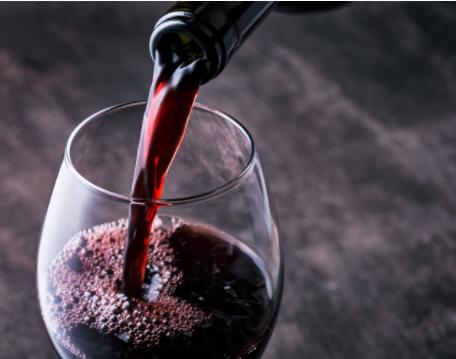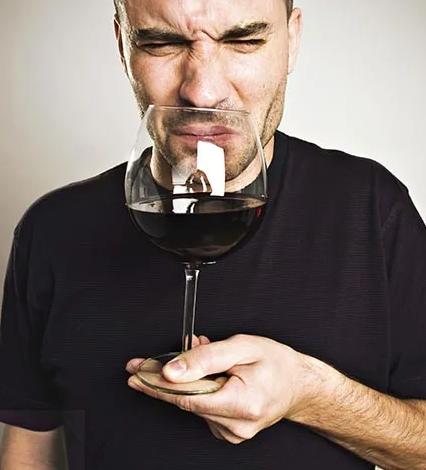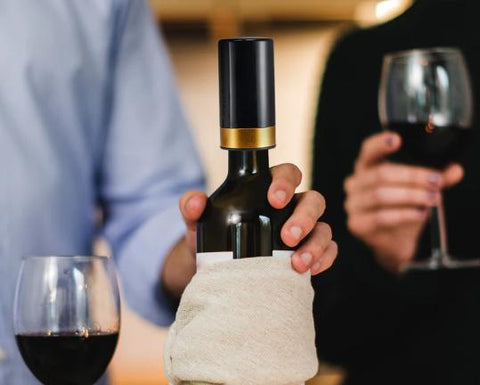How to Tell If Wine Is Bad: Unveiling the Mysteries
Wine, a nectar of the gods, is not immune to the inevitable march of time. It evolves in the bottle, often for the better, but occasionally, it takes a turn for the worse. As wine enthusiasts, it's crucial to discern when our cherished bottles have crossed the line from aging gracefully to becoming undrinkable. In this comprehensive guide, we'll explore the intricate world of wine spoilage. From when it goes bad to how to tell if wine has gone bad, we'll demystify the process. Besides, we'll also address the safety concerns of sipping on spoiled wine and provide tips on keeping your beloved vintages fresh. So, let's start this vinous journey to unlock the secrets of wine spoilage.

How Long Does it Take for Wine to Go Bad?
The longevity of wine hinges on a pivotal factor: whether it's opened or unopened. Unopened wine, under ideal storage conditions, showcases remarkable endurance. White wines, for instance, often exceed their recommended drinking window by an additional 1-2 years, while their red counterparts, known for their robust character, typically persist for approximately 2-3 years beyond their prime. Fine wines, the jewels of collections, can gracefully age for decades when kept in optimal conditions.
However, once a bottle of wine is opened, a distinct set of rules applies. It becomes exposed to various elements such as heat, light, bacteria, and oxygen, initiating chemical reactions that promptly alter its taste and aroma. Generally, Ports maintain their allure for roughly 1-3 weeks after uncorking, while dessert wines extend this span to about 3-7 days. Red and rich white wines fall in the middle, with their quality enduring for approximately 3-6 days. Lighter white wines offer around 4 or 5 days, while sparkling wines, celebrated for their effervescence, provide a mere 1-2 days of peak enjoyment. To prolong an opened wine's freshness, ensure a tight seal and refrigeration or consider transferring it to a smaller, well-sanitized glass container to minimize oxygen exposure.
How to Know If Wine is Bad?
Identifying a bottle of spoiled wine might sound like a daunting task, but with a few key indicators, you can become a seasoned pro at detecting the subtle nuances that signify spoilage. Here are some tips about how to tell if red wine/white wine is bad:
Appearance: A Visual Insight
Visual cues can offer valuable insights into the condition of your wine. When a bottle has gone bad, you might notice the following changes:
- Cloudiness: While some wines naturally have a cloudy appearance, a formerly clear wine turning cloudy could indicate microbial activity within the bottle.
- Change in Color: Excess exposure to oxygen can lead to color changes. Though not inherently bad, it suggests significant oxidative stress in the wine, which can affect its quality.
- Development of Bubbles: Unless it's a sparkling wine, finding small bubbles in your bottle is a sign that secondary fermentation has occurred post-opening, making it unsuitable for consumption.
A Whiff of Trouble: The Role of Smell
Our olfactory senses can be powerful detectors of spoiled wine. Here are the key smells to watch out for:
- Acetic Acid Scents: Spoiled wine may have an acidic, tangy aroma reminiscent of vinegar or sauerkraut. This typically occurs due to bacterial contamination.
- Oxidation Smells: Extended oxygen exposure leads to odors resembling apples, cooked sugar, or nuts. It's a sign that the wine has lost its flavor due to prolonged contact with oxygen.
- Reduction Odors: Some wines can go bad before even being opened, often due to wine faults. This results in off-putting smells like cabbage, garlic, burnt rubber, or garbage.
A Taste of Reality: What Does Spoiled Wine Taste Like?
Tasting wine is the final frontier in how to tell if red wine is bad. Trust your taste buds, and be on the lookout for these flavors:
Sharp or Sour Vinegar Flavors: Oxidized wine can exhibit fruity and sweeter taste profiles.
Horseradish-Like Taste: Wines that have undergone further fermentation may taste sour or bitter.
Sherried or Caramelized Flavors: Prolonged oxidation can introduce flavors reminiscent of caramelized applesauce, known as "Sherried" flavors.

Is it Dangerous to Drink Spoiled Wine?
The good news is that drinking spoiled wine is unlikely to pose any health risks. Wine is a hostile environment for pathogenic bacteria, so even if it's gone bad, it's more a matter of taste than safety. However, an unpleasant taste experience is reason enough to avoid sipping on spoiled wine.
How to Keep the Wine Fresh?
Preserving the freshness of your beloved wine is essential. Fortunately, it's a simple task that requires proper resealing and storage techniques. Here's how to maintain the pristine quality of your open bottles:
- Resealing: After opening a bottle, reseal it tightly with either the original cork or cap it came with or use a reusable stopper. This minimizes oxygen exposure.
- Refrigeration: Store all bottles, including white, sparkling, or red wines, in the refrigerator. Refrigeration helps slow down the oxidation process and keeps your wine fresh for up to a week.
- Wine Gadgets: For wine aficionados, various wine preservation tools like wine pumps can further extend the freshness of opened bottles.
- Transfer to Smaller Container: Pour your leftover wine into a smaller glass container to reduce the oxygen content. This helps preserve the wine's flavor and aroma.

Conclusion
Now we know when does wine go bad and how do you know if wine is bad. Wine is a complex and intriguing beverage that evolves over time. While it doesn't "spoil" in the traditional sense, it can certainly take a turn for the worse. By understanding the visual, olfactory, and gustatory cues, you can confidently discern if your bottle has gone bad. Remember that sipping on spoiled wine may not harm you, but it's far from an enjoyable experience. With proper resealing and storage techniques, you can extend the lifespan of your open bottles and continue to savor the joy of wine tasting.
